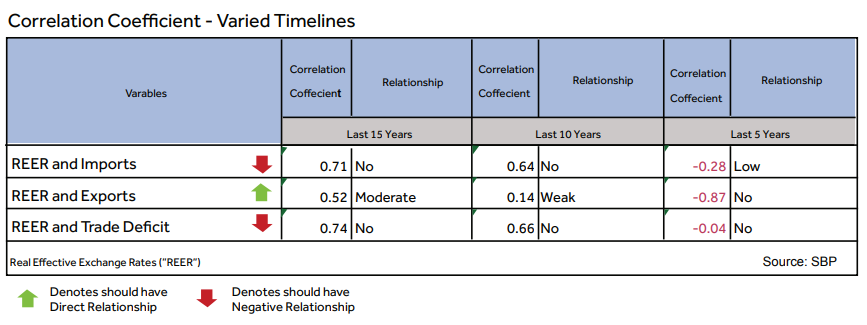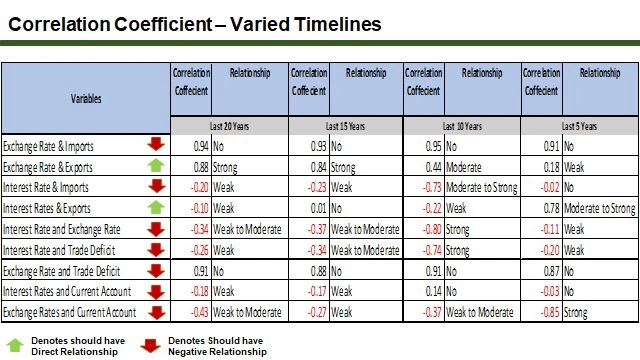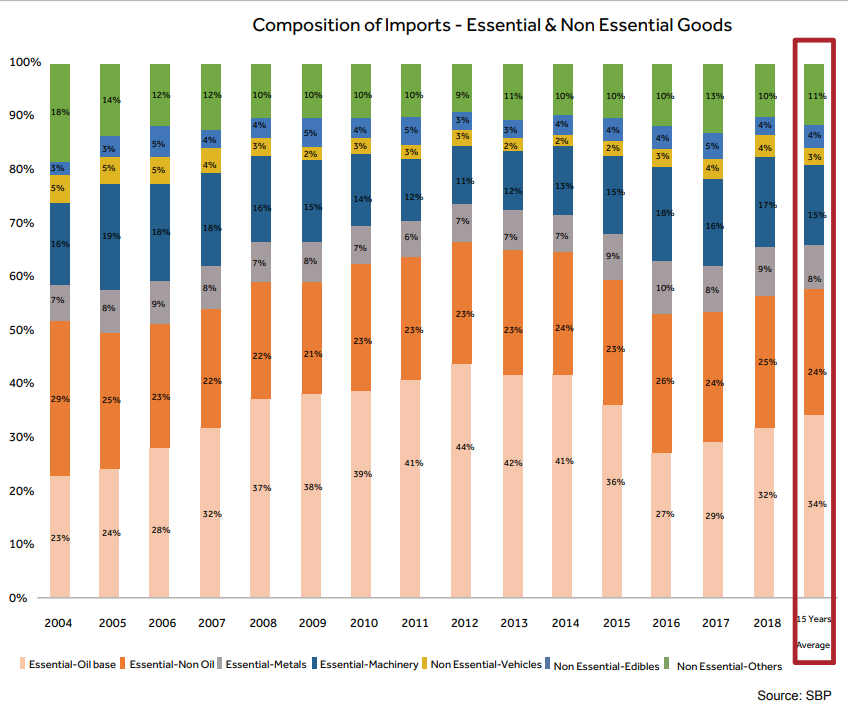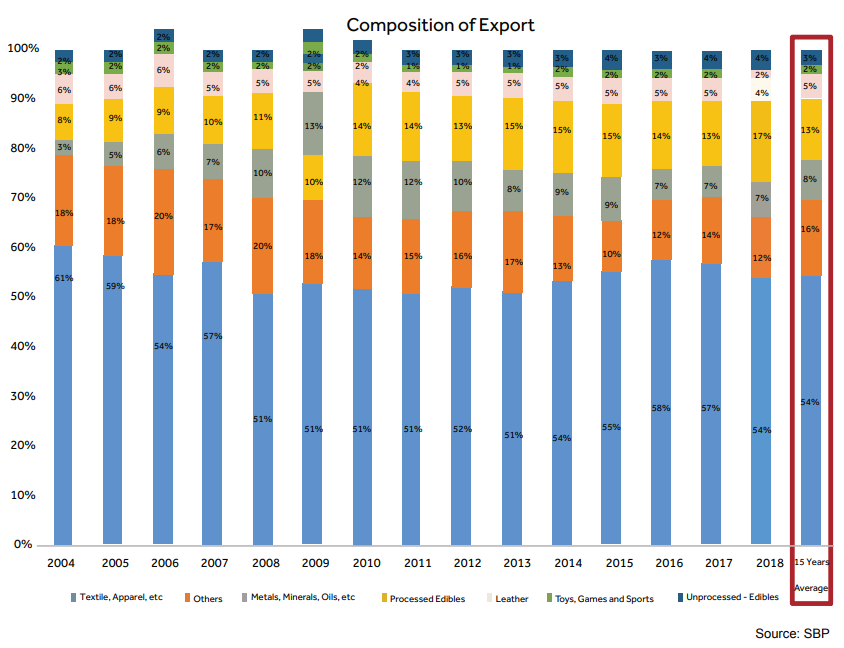Further to my earlier article “Managing the External Account – Monetary Policy”, this is the second article of the three-part series of my articles on managing external accounts.
On the first article, I got very sound and constructive feedback from a very close economist friend, who I consider as one of the best economist in the Country. He had pointed out that “conditional and unconditional correlations by no means imply a causal relationship”, which means that if casual relationship between exchange rate and trade deficit is considered then the results changes and leads to positive correlation between the two. While with different sets of data, the conclusion is very different then the one I had drawn earlier; however, looking more into it, I had realized that perhaps my conclusion, based on more practical aspects then the conclusion drawn in a perfect environment, is probably more real. Unfortunately, we, in Pakistan, neither operate in a perfect environment nor have an adequately documented economy. Therefore, we must accept the economic theories with a pinch of salt and put our own “open environment” conclusion to it. As I said in my earlier article, with a very large grey-economy coupled with almost 81% (last 15 years average) of the imports being essential and low value-added & narrow export base, there will be a very limited influence of exchange rate on the trade deficit. Furthermore, even if one would accept the economist argument that imports are elastic to real exchange rate then one must appreciate that it’s at the expense of economic growth which is the cornerstone of achieving maximum, if not full, employment goal – the primary economic objective for any Government for it’s people. Pakistan being far-away from this situation, require atleast a double digit growth for a consistent period of decades, like India and China, to achieve the ultimate objective on the employment front.
Having said that, let’s now look at the possible impact of fiscal policies in managing the external account. Before, we proceed further, I must highlight that the impact of fiscal policy is always better than monetary policy in managing external account in an environment like the one prevailing in Pakistan. However, fiscal policy tools have also been exhausted to a very large extent and now these tools could further be stretched to an extent only, and then we will have to move into the realm of structural changes to complete the loop to address the growing trade deficit. The most interesting revelation is that Pakistan is stuck in a trap of essential imports from the economic growth standpoint, with oil based imports being 1/3rd of total imports and non-oil based and machinery & metals being 24% and 23%, respectively. Any further management of import bill through exchange rate would risk essential imports (particularly, machinery) to suffer; otherwise, significant impact on import controls would not appear. Therefore, selectively discouraging targeted imports will be the only way out to keep the balance between growth rates/ employment generation and preserving perhaps the most precious commodity in Pakistan (i.e., the foreign exchange reserves). This objective could most effectively be achieved through the smart fiscal policies, whereby, various import discouraging instruments, like import duties, regulatory duties, cash margins, etc., could be instituted or further enhanced on the non-essential items, while essential items could be left alone. One must keep in mind that the fundamental difference between controlling imports through fiscal policy and monetary policy is that fiscal polices could be targeted, on the other hand, monetary policy has blanket impact across all constituencies. Hence, at this stage, fiscal policies are maybe more appropriate to manage the external account. The import substitution, both in oil based imports and non-oil based imports, is the only way of getting out of this is “import-trapped-growth” situation. This is at least a medium to a long term solution by introducing enabling policies to encourage local exploration, refining and above all distribution systems, in addition to promoting our local engineering industries which will not only assist in import substitution but may also provide a good base for exports in due course. In the short run, immediate imposing of ban on certain items, or to enhance duties and taxes, at the import stage on these non-essential items, would yield better results, which the Government seems to be aware of and trying to pursue. This is admitted that with such actions, the risk of leakage through smuggling may enhance but then one would argue, and argument vehemently, that this aspect must be controlled irrespective of the fiscal policies.
The other side of the coin is exports. Let’s look at the composition there. There’s almost a consensus amongst the economists and the practitioners that the exchange rate doesn’t have “sustainable impact” on exports. Our exports are very narrow with over half of the imports being textiles, and including oil based products and leather, the exposure goes up to 2/3rd on merely three categories of exports. There’s a dire need to promote value-addition in our exports. The trade policies must be geared towards that aspect only, which again the Government appears to be well cognizant of and working on.
In nutshell, this is reiterated that at this stage, the monetary instruments have almost been exhausted and now more focus shall be on the fiscal policies to ensure maximum benefit in the short run. Given the importance of these elements, I would like to repeat that duties, cash margins, bans all together, etc., on the imports, shall be employed, while simultaneously working on the import substitution as a medium to a long term fix. On the other hand, sustainable growth in export flows could only be achieved through a medium to long term solutions with structural changes (value-addition, non-conventional exports, etc.) and exploring new paths, like manpower exports which must be given the status of industry, and measures must be taken and offer incentives, accordingly. In immediate future, a structured and effective mechanism must be put in-place for the release of duty refunds and ensuring that the input costs for exporting industries remain competitive with the regional players. Next, and the last article, of these series of write-up, will debate on managing external account through structural changes.




Previous
Next